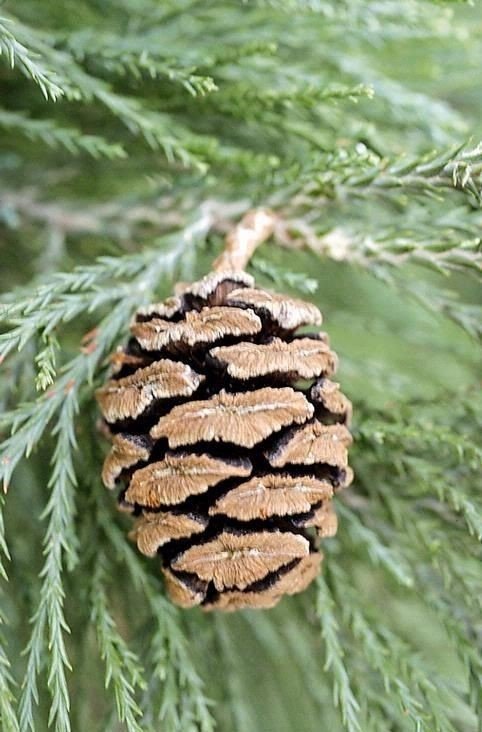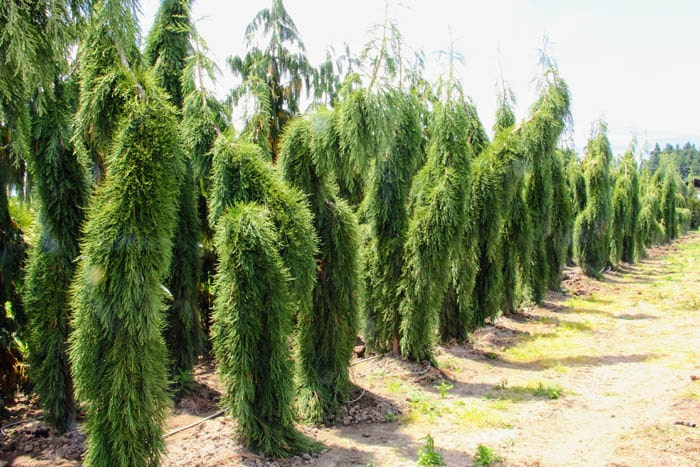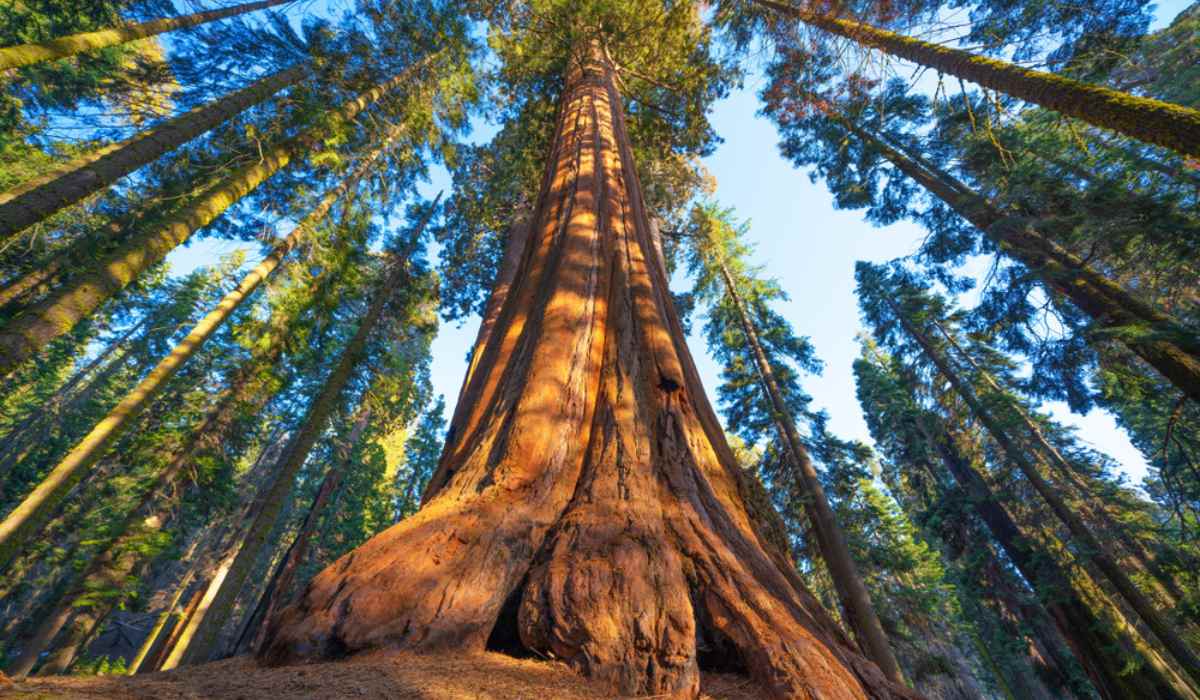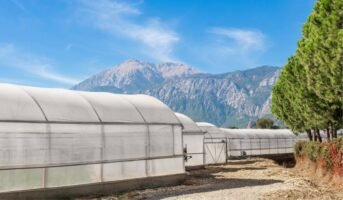One of the most challenging trees in the world is the giant Sequoia. Their thick bark makes them resistant to fire, fungal decay, and wood-boring beetles. The magnificent, auburn-toned bark of the enormous redwood Sequoiadendron giganteum is where it derives its name. Generations of Californians have been inspired by the vast Sequoia, also known as the Sequoia or Sierra redwood, for its capacity to grow to enormous size.
See also: What is the magnificent Jacaranda mimosifolia tree?
Sequoia tree: Quick facts
| Botanical name | Sequoiadendron giganteum |
| Common name | Coast wood, redwood, California redwood |
| Family | Cupressaceae |
| Native tree | West slope of the Sierra Nevada in central California |
| Tree size | 250 and 300 feet tall |
| Tree colour | Grey bark,
Blue-green or grey-green leaves |
| Soil type | Deep, well-drained sandy loams. |
| Temperature | -25 to -31 degrees Celsius |
| Season | April to mid-June |
| Toxic | Non-toxic |
Sequoia tree: Description
Sequoia trees in the Sierra Nevada mountains of California can be located on the west-facing slope between 4,500 and 8,000 feet in height. Giant sequoias can live up to 3,000 years and reach heights of over 300 feet in their natural habitat. Mature trees often reach heights of 200 to 275 feet. When young, sequoias have a tall, slender trunk and a narrow, conical crown, whose branches almost completely encircle the tree. The tree starts to spread out, grow broad lateral limbs, and lose the lower branches once it reaches its maximum height.
The leaves of the giant Sequoia are uniformly scale-like or awl-shaped, and they cling closely to the branches. The winter buds are scaleless. The dense cones need two seasons to develop and open after a wildfire. The tannins in the giant Sequoia’s tree trunk give it its distinctive reddish hue and prevent insects from gnawing through the bark.
Sequoia tree: Growth
Only seeds, some of which can stay in the cone for 20 years, are used to reproduce giant sequoias. Forest fires aid in the opening of the cones, which later develop from the bare, burned soil.

Source: Pinterest
- Attempt to locate a mature sequoia tree and search for green cones on the ground if you decide to collect the seed. They have the greatest likelihood of germinating.
- Inside the house, let them air dry. Cones will gradually unfurl and release their seeds.
- Giant sequoia tree seeds require a brief period of exposure to low temperatures to weaken their shells and break their dormancy. Four weeks is a reasonable minimum time frame.
- Grab a paper towel to break the dormancy. Make sure there are no chemicals in the paper.
- Place a few seeds on the paper using gloves or your clean hands. You may now fold the filter in half.
- You should dampen the filter before being placed in a sandwich bag with some air. Wait four weeks while the bag is in the refrigerator.
- Put the bag in a cool, dark area after the time has passed.
- Open the bag and check for sprouted seeds after a few days. Take them out and prepare them ready to plant if you see any.
- Return the bag to the shade and periodically check for fresh seedlings.
- You should use standard potting soil to prepare individual pots.
- A moist yet well-drained soil is required for sequoia seedlings.
- Use top-notch potting soil to fill a peat pot.
- In a peat pot, sow at least ten redwood seeds at a depth of 1/8 inch.
- You should plant shallowly redwood seeds since they require sunshine to germinate.
- Remember that about 20% of Giant Sequoia seeds germinate.
- Seal the plastic bag with a rubber band before placing the pot inside.
- Seeds should not become dry during germination and be careful not to over-water.
- Keep your pot moist in a relaxed environment with indirect light, away from direct sunlight.
- Your seedlings’ stems ought to soon resemble an upside-down crimson U.
- The first cotyledons will begin to emerge, and the seed envelope will gradually rise and fall.
- In 30 to 40 days, germination takes place. Plant the peat pot in a larger container with more potting soil once the tree is tall. Keep the tops misted, but don’t overwater.
How can a Sequoiadendron be grown from a pit?

Source: Pinterest
Remove the protective covering from the tree’s roots and carefully remove it from its packaging. Place the tree in the glass of water now, carefully submerging the roots. Give it an hour before moving it. Use that time to prepare a 2+ gallon container with top-notch soil that will function as your Sequoia’s temporary home.
Once you have it, plant your tree by digging a 3″ in diameter and 8″ deep hole. After that, bring the Sequoia to the container, place it in the hole, and cover it with soil. Lastly, add more water to the ground.
Find a bright spot in your home where you can encourage the tree to thrive. You will only need to water the tree for the upcoming months once the soil is almost entirely dry. If necessary, thoroughly saturate the container with water.
Just remember that overwatering your Sequoia might cause it to die, so do it when necessary. Feel free to use high-nitrogen and time-release fertilisers to make your tree stronger at this stage.
How to plant
Moving your Sequoia involves drilling a hole and placing the tree inside. It needs to be placed in the ideal location; else, you risk killing it.
If you reside in a cold climate, be cautious about shielding your tree from the winds, which may damage a developing Sequoia over the winter.
- Choose a location where your plant will grow well in sunlight and drainage.
- You have your ideal space and your sturdy Sequoia. Please take it to the ground at this point!
- The optimal time to perform the transplant is in the fall because it is the finest time of year.
- Clean up all the vegetation and anything else you discover in your chosen location to prepare it.
- After that, plant your tree in a hole more significant than its root ball.
- To improve the habitat in which your Sequoia will flourish, add a combination of the surrounding soil, compost, and sand around the roots.
- Water your tree as entirely as you can whenever you see fit as a final touch.
- The plants will begin to sprout branches after a few weeks. It shows that they are prepared for a little more sunlight.
- Move your plants gradually into a brighter area, but keep them out of direct sunshine.
- It’s finally time to take a back seat and admire your Giant Sequoia’s development.
Their roots are shallow. There is no tap root to attach them to the ground firmly. Even though the bases only extend 6–12 feet, these trees hardly ever topple over. Strong winds, earthquakes, fires, storms, and prolonged flooding cannot damage them. So, don’t be concerned about falling Sequoias during the windy season.
Sequoia tree: Tips to keep in mind
- Placing plants at least 20 feet from any structures would be best.
- A tree can reach 130 feet in height in 50 years—plant in a position with full sun.
- Cover the roots but stop short of going deeper.
- Plant in soil that drains properly.
- After soaking the soil with water, let it air dry before watering it again.
- For the first 5 to 6 years, fertilise using a balanced fertiliser.
- When planting, you should add just 30% compost or manure to the soil.
- Plants should be grown in good soil.
- Add grit to the soil if it contains clay to help with drainage.
- The proper potting soil and fertiliser must be used when planting in containers to prevent plant death.
- Avoid using fertilisers like 10/10/10, 16/16/16, and others like them because they are heavy in salt and will burn your plants.
- Giant sequoias require fire to survive.
- The gigantic Sequoia shoots skyward and soars above other trees because it needs constant sun to survive.
Sequoia tree: Uses
- New-leaf sequoias have high commercial and ecological value due to their rapid growth and exceptional timber.
- Durable posts, poles, and pilings are made from redwood trees harvested for this purpose.
- Additionally, it can be utilised for musical instrument turnings, veneers, building lumber, posts, and beams.
- Value-added products made from them include structural lumber, exterior siding, interior finishing, furniture, and cabinets.
- The wood was primarily utilised for roofing materials, fence posts, and even matchsticks.
FAQs
What is the depth of sequoia roots?
When the roots of the giant Sequoia trees reach a height of between 100 and 150 feet, they eventually cover an area of forest land of about four square acres.
Will sequoias endure the winter?
The Giant Sequoia is a very adaptable species, despite its small native range. It can grow anywhere in the United States and is heat and cold-resistant.
Is Sequoia a hardwood or a softwood?
It is a softwood that is lightweight and has an excellent weight-to-strength ratio. Due to its weather durability, it is frequently used for outdoor furniture and decks.
Housing News Desk is the news desk of leading online real estate portal, Housing.com. Housing News Desk focuses on a variety of topics such as real estate laws, taxes, current news, property trends, home loans, rentals, décor, green homes, home improvement, etc. The main objective of the news desk, is to cover the real estate sector from the perspective of providing information that is useful to the end-user.
Facebook: https://www.facebook.com/housing.com/
Twitter: https://twitter.com/Housing
Email: [email protected]












